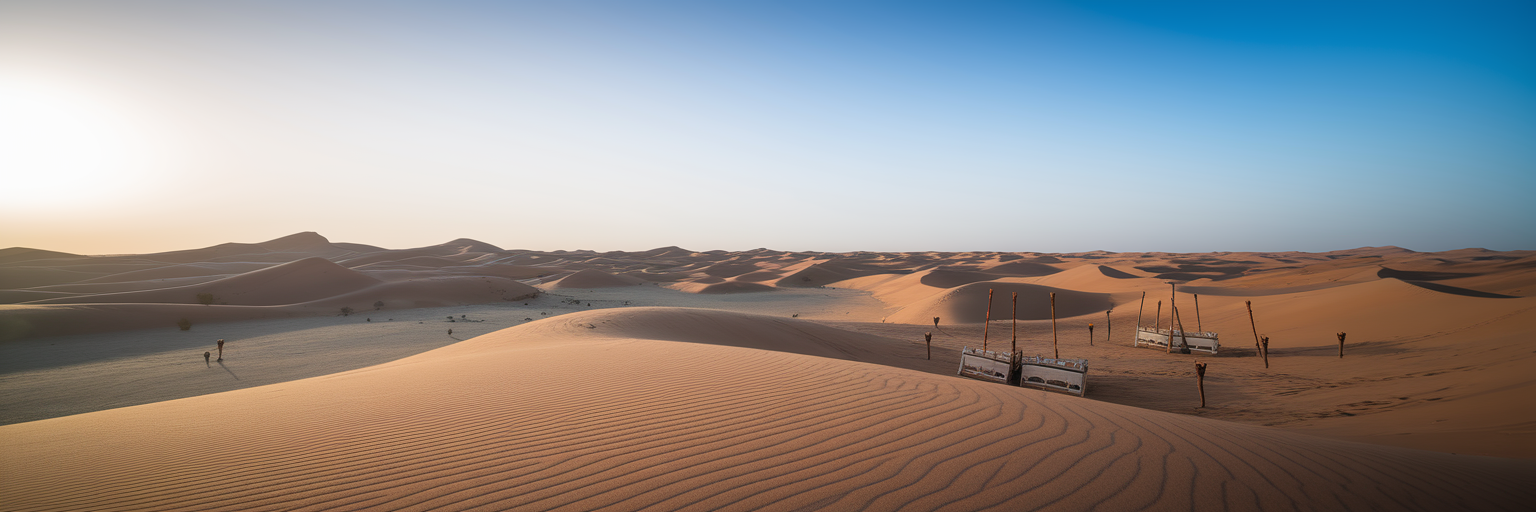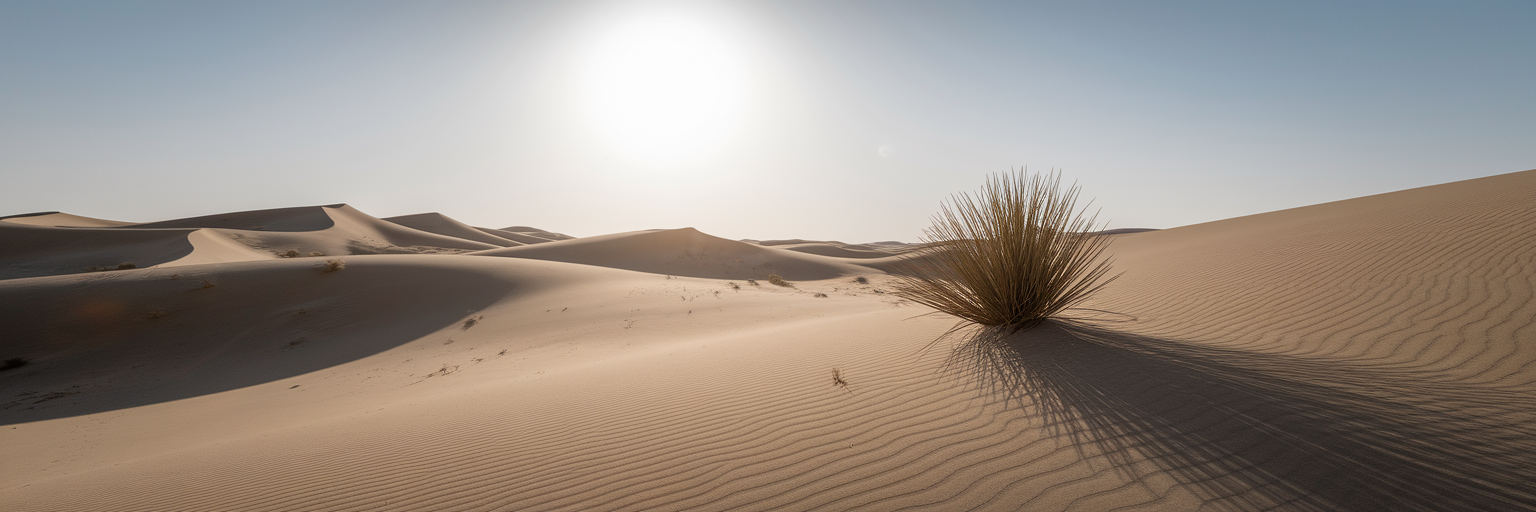The best time for Desert Safari Dubai is the cool season from November to The secret to an unforgettable desert adventure is not about the vehicle you choose or the camp you visit. It is about aligning your trip with the desert’s natural clock. Understanding this is the first step to planning an experience that is breathtaking rather than draining.

Best Time for Desert Safari Dubai by Month (Nov–Mar vs Summer)
The single most critical factor in planning your trip is Dubai’s climate, which is defined by two distinct seasons. The winter, from November to March, offers mild and pleasant conditions. In contrast, the summer, from June to September, brings intense and challenging heat. This seasonal shift dictates everything about the quality of your experience.
A key feature of the desert is its diurnal temperature variation. This means temperatures can swing dramatically between day and night. A warm afternoon can quickly give way to a surprisingly cool evening once the sun sets, a detail often missed by visitors. Furthermore, the humidity, especially during the late summer months, plays a significant role. It makes the heat feel far more oppressive and can create a persistent haze that obscures the otherwise sharp, clean lines of the dunes.
Relying on a standard city weather forecast can be misleading. The open desert is a unique microclimate. The direct, unfiltered sun and the radiant heat rising from the sand create an environment that feels significantly hotter than the temperature reading on your phone might suggest. This specific Dubai desert safari weather is what you need to plan for, as it directly impacts your comfort and enjoyment throughout the tour.
The Prime Season for a Desert Safari (November to March)

When you picture the perfect desert adventure, you are likely imagining a winter desert safari in Dubai. This period from November to March is unequivocally the prime season. The comfortable daytime temperatures, typically ranging from a pleasant 19°C to 25°C, make every outdoor activity genuinely enjoyable rather than an endurance test.
The benefits of this season extend beyond just the temperature. The air is crisp, the humidity is low, and the skies are a brilliant, clear blue. These conditions are ideal for photography, allowing you to capture the vibrant, fiery colours of a desert sunset without the haze of other seasons. The clear nights also offer an incredible canvas for stargazing, far from the city’s light pollution.
These pleasant conditions directly enhance the safari itself. The thrill of dune bashing feels more exhilarating when you are not battling oppressive heat. Sandboarding down a dune becomes a fun activity instead of a strenuous climb. Even a gentle camel ride is more charming when the air is cool and refreshing. You can fully immerse yourself in the experience without feeling physically drained.
However, this ideal weather comes with a practical trade-off. This is the peak tourist season in Dubai, which means demand for safaris is at its highest. To avoid disappointment, it is essential to book your Desert Safari Dubai well in advance to secure your preferred date and tour type.
Navigating the Shoulder Seasons (April-May and October)
For the savvy traveller, the shoulder seasons of April, May, and October present a compelling alternative. These transitional months offer a balance between manageable weather and fewer crowds. While the heat is noticeably increasing, it has not yet reached the extreme levels of mid-summer. The primary advantage here is the potential for more competitive pricing and greater availability, allowing for more spontaneous planning.
The key to a successful shoulder season safari is timing. Choosing an early morning or a late evening tour becomes a necessity, not just a preference, to avoid the intense midday sun. Planning with the right gear and mindset is crucial. When considering what to wear for the Dubai safari during these months, think light and practical.
Here are some actionable tips for making the most of a shoulder season safari:
- Prioritise Hydration: Begin drinking water well before your tour starts and continue throughout. Do not wait until you feel thirsty, as the desert air can dehydrate you quickly.
- Choose Breathable Fabrics: Wear lightweight, loose-fitting clothing. Natural materials like linen and cotton are far more comfortable than synthetics in the heat.
- Sun Protection is Non-Negotiable: A high-SPF sunscreen, a wide-brimmed hat to shield your face and neck, and quality sunglasses are essential items.
- Opt for a Morning Tour: To experience the desert’s beauty before the heat becomes intense, consider one of our morning desert safari options, which conclude before the day’s peak temperatures.
The Challenges of a Summer Safari (June to September)

We believe in being direct about visitor safety and enjoyment. The summer months from June to September are the least recommended time for a desert safari. With temperatures frequently soaring above 40°C, the extreme heat poses significant risks and diminishes the quality of the experience. This is simply not the best time for a desert safari in Dubai.
The intense conditions introduce serious health and safety concerns. Global health bodies like the World Health Organization (WHO) warn about the dangers of heat-related illnesses in such climates. The primary risks include:
- Heat Exhaustion: Characterised by dizziness, heavy sweating, and nausea, it can escalate quickly in the desert environment.
- Heatstroke: A severe medical emergency that occurs when the body can no longer control its temperature. It requires immediate medical attention.
- Severe Dehydration: The desert air accelerates fluid loss, making dehydration a constant and serious threat.
Beyond the safety issues, the heat compromises the adventure itself. Activities like sandboarding and camel riding are often shortened or cancelled to protect guests. The harsh midday glare and atmospheric haze can ruin photographic opportunities, washing out the vibrant colours of the dunes. For travellers whose schedules permit no other option, some operators offer heavily modified tours that focus on air-conditioned camp activities. These are compromises, not the authentic experience. If you must travel in summer, booking one of our private desert safari tours in Dubai can offer more flexibility to manage the schedule and minimise heat exposure.
Morning, Evening, or Overnight? Choosing Your Safari Time
Once you have settled on the best season for your visit, the final decision is choosing the type of safari that best fits your travel style. The morning vs evening desert safari debate comes down to personal preference, as each offers a distinctly different atmosphere and set of experiences. This choice is less about the weather and more about the kind of memories you want to create.
A Morning Safari is for the early riser who seeks tranquility. The desert is at its most serene in the soft morning light, offering a peaceful atmosphere and a higher chance of spotting native wildlife like the Arabian Oryx. In contrast, the classic Evening Safari is built around thrill and culture. It features exhilarating dune bashing during the golden hour, a spectacular sunset, and concludes with a traditional Bedouin-style camp experience with dinner and entertainment.
For the truly adventurous, an overnight desert safari in Dubai offers the deepest immersion. It combines all the elements of an evening safari with the unique opportunity to sleep in a traditional tent under a blanket of stars, waking up to a quiet desert sunrise. This is an unforgettable experience, but one best reserved for the comfortable winter months.
| Safari Type | Best For | Key Activities | Ideal Season |
|---|---|---|---|
| Morning Safari | Early risers, photographers, and those seeking tranquility | Sunrise views, gentle dune driving, sandboarding, camel riding | Winter, Shoulder Seasons |
| Evening Safari | Thrill-seekers and those wanting the classic cultural experience | Sunset views, high-octane dune bashing, BBQ dinner, live entertainment | Winter (Prime), Shoulder Seasons (Manageable) |
| Overnight Safari | Adventurous travellers seeking full immersion | All evening activities plus stargazing, traditional tent accommodation, sunrise breakfast | Winter Only |
This table provides a summary to help you choose the safari that best matches your travel style and the time of year you plan to visit Dubai. Now that you know the best time to visit, you can explore all the incredible safari adventures available at Dubai Safaris.
FAQs: Best Time for Desert Safari Dubai
What is the best time for Desert Safari Dubai?
November to March. Days are comfortable, humidity is lower, and sunsets are crystal clear—ideal for dune bashing, sandboarding, and photos.
Morning vs evening desert safari—what should I choose?
Morning = cooler, quiet, great light, and wildlife chances. Evening = golden-hour thrills plus camp dinner and shows. Choose by vibe and schedule.
Is summer a bad time for a desert safari in Dubai?
It’s possible but not ideal (June–September). Heat exceeds 40°C and activities are shortened. If you must go, book private or early-morning tours.
What should I wear for a Dubai desert safari?
Light, breathable fabrics (cotton/linen), closed-toe shoes, hat, sunglasses, SPF 50+, and a light layer for cooler winter evenings.
Do I need to book in advance in winter?
Yes. November–March is peak season; book your preferred date, vehicle, and seating early to avoid sell-outs.
How do I stay safe in the desert heat?
Pre-hydrate, keep sipping water, use high-SPF sunscreen, avoid midday tours in shoulder/summer months, and follow your guide’s instructions.
Is an overnight desert safari available year-round?
Typically, yes—but it’s most comfortable in winter. In summer, nights remain warm, and humidity can be high.
Which months have the clearest skies for photography?
Generally December–February: crisp air, low haze, and vivid sunsets over the red dunes.